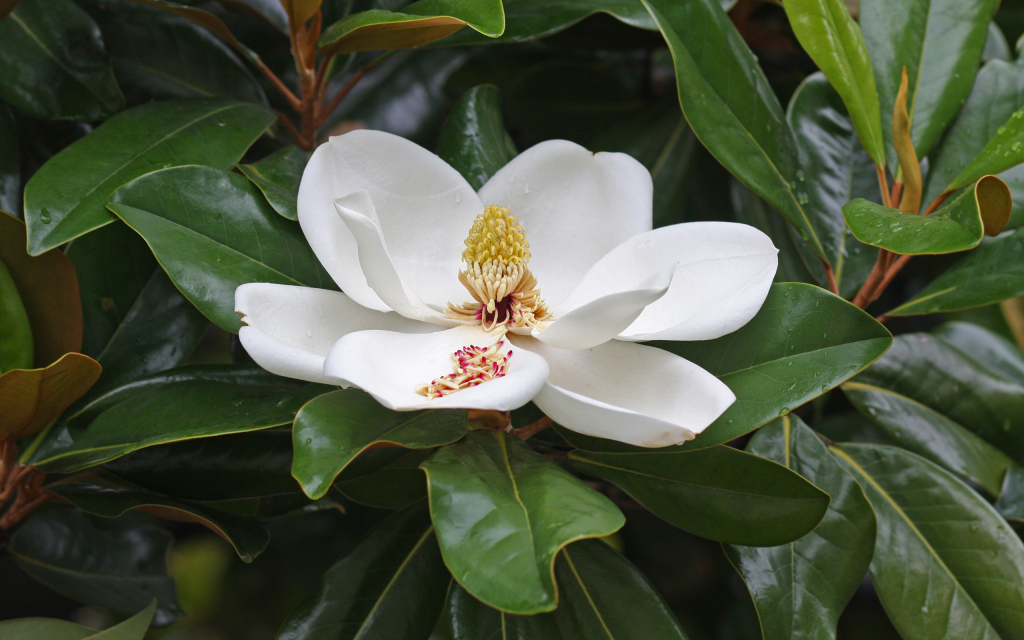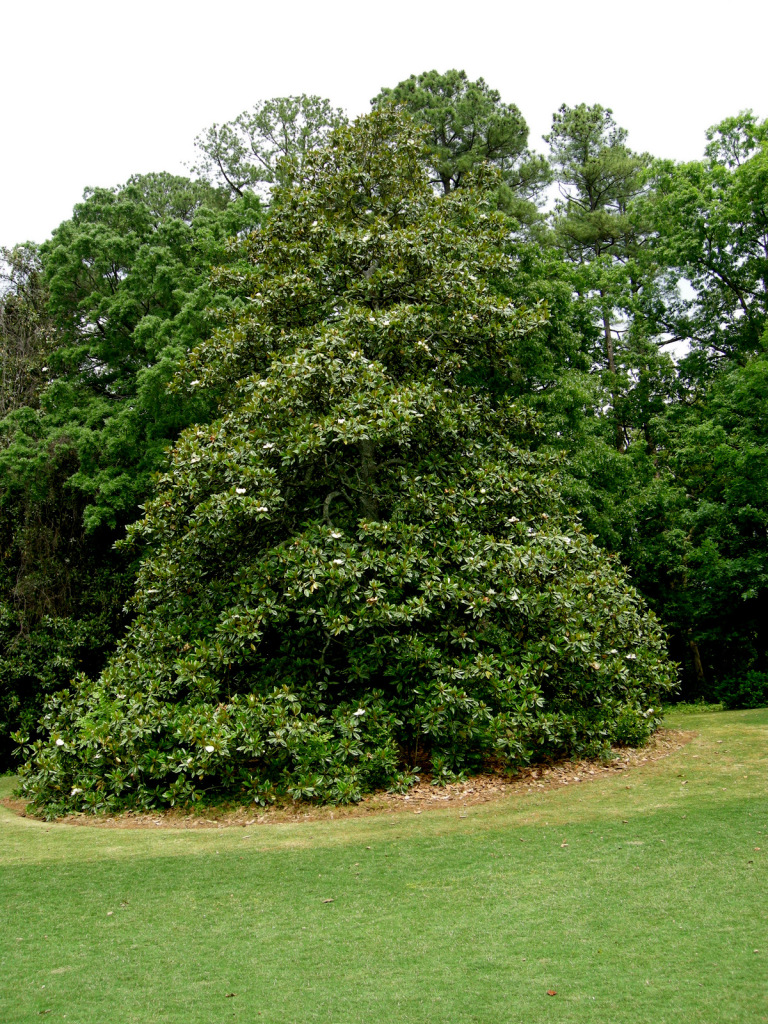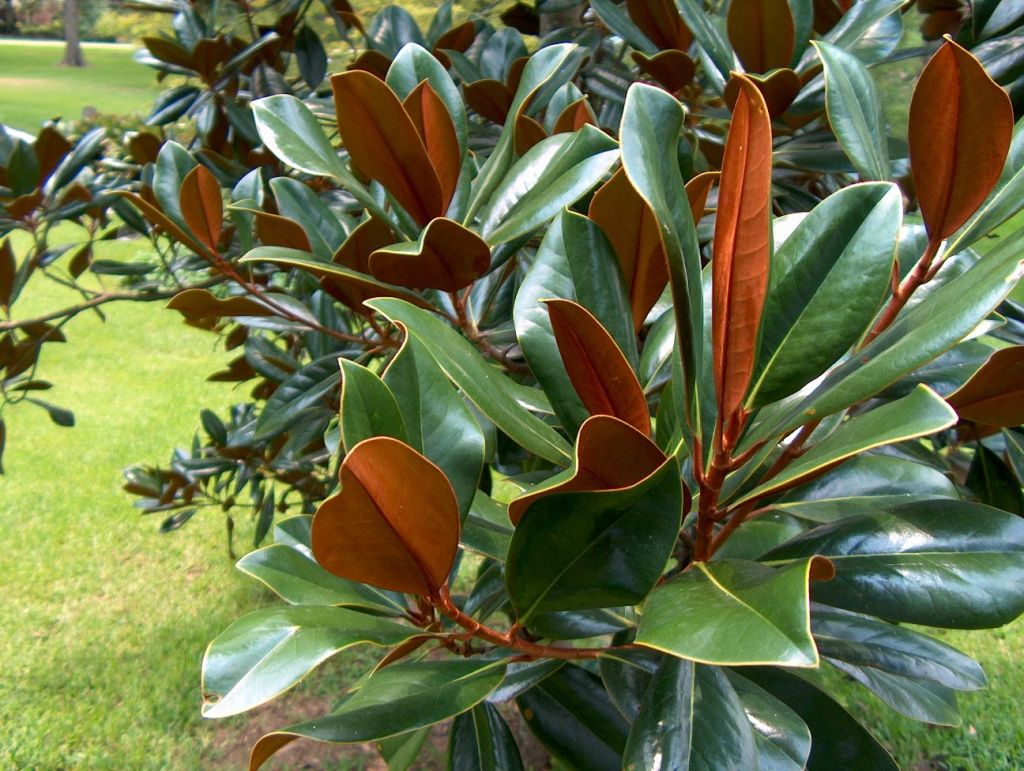
You can't get much more southern than a southern magnolia (Magnolia grandiflora)! From the enormous, iconic flowers with their heavy, summery scent to the glossy evergreen leaves that look stunning in every season, it's no wonder these trees are a classic staple of southern gardens and landscapes. Some of my fondest childhood memories are of visiting my grandparents in Georgia and climbing the large southern magnolia next to the carport. As I got older I would help with the leaf raking whenever I visited, because the one downside is they do drop a lot of leaves!
Maintenance
Southern magnolias are not too difficult to grow as long as the soil moisture level is not too wet or too dry. The challenges with growing these beautiful trees are mainly managing the area beneath the tree and the leaf drop. The dense canopy creates deep shade, and the shallow roots compete for water and nutrients, so it's very difficult to grow anything underneath an evergreen magnolia. One option is to simply install mulch over the soil underneath the drip line (the widest part of the canopy), or if it's in a less manicured area, allow the leaves that drop to form a natural mulch layer.
Be prepared for the extra leaf removal work, because the leaves do drop in the spring and the fall. You may want to avoid planting these trees in locations where heavy leaf fall would be annoying to you, such as near a pool, patio, or outdoor kitchen area.
 A large old southern magnolia at Duke Gardens. Notice how the leaves are allowed to drop naturally beneath the branches, and the grass ends at the drip line.
A large old southern magnolia at Duke Gardens. Notice how the leaves are allowed to drop naturally beneath the branches, and the grass ends at the drip line.
ID Tips
- Leaves are large, broad, elliptical, leathery, and evergreen.
- Leaves usually have dense brown fuzz (pubescence) on the undersides.
- The flowers are very large, with white petals and a large cone where seeds are produced in the middle.
- The flowers are heavily scented and can be smelled from quite a distance! It can be overpowering.
- After the flowers fade, bright red seeds pop out of the brown fuzzy cones, and the cones later drop onto the ground with the leaves.
 Note the brown fuzzy backs of the leaves.
Note the brown fuzzy backs of the leaves.